The New Christiaan van der Klaauw Planetarium Dunes of Mars Limited Edition
The red sandy grounds of Mars get reproduced on the dial of this new edition of CVDK Planetarium
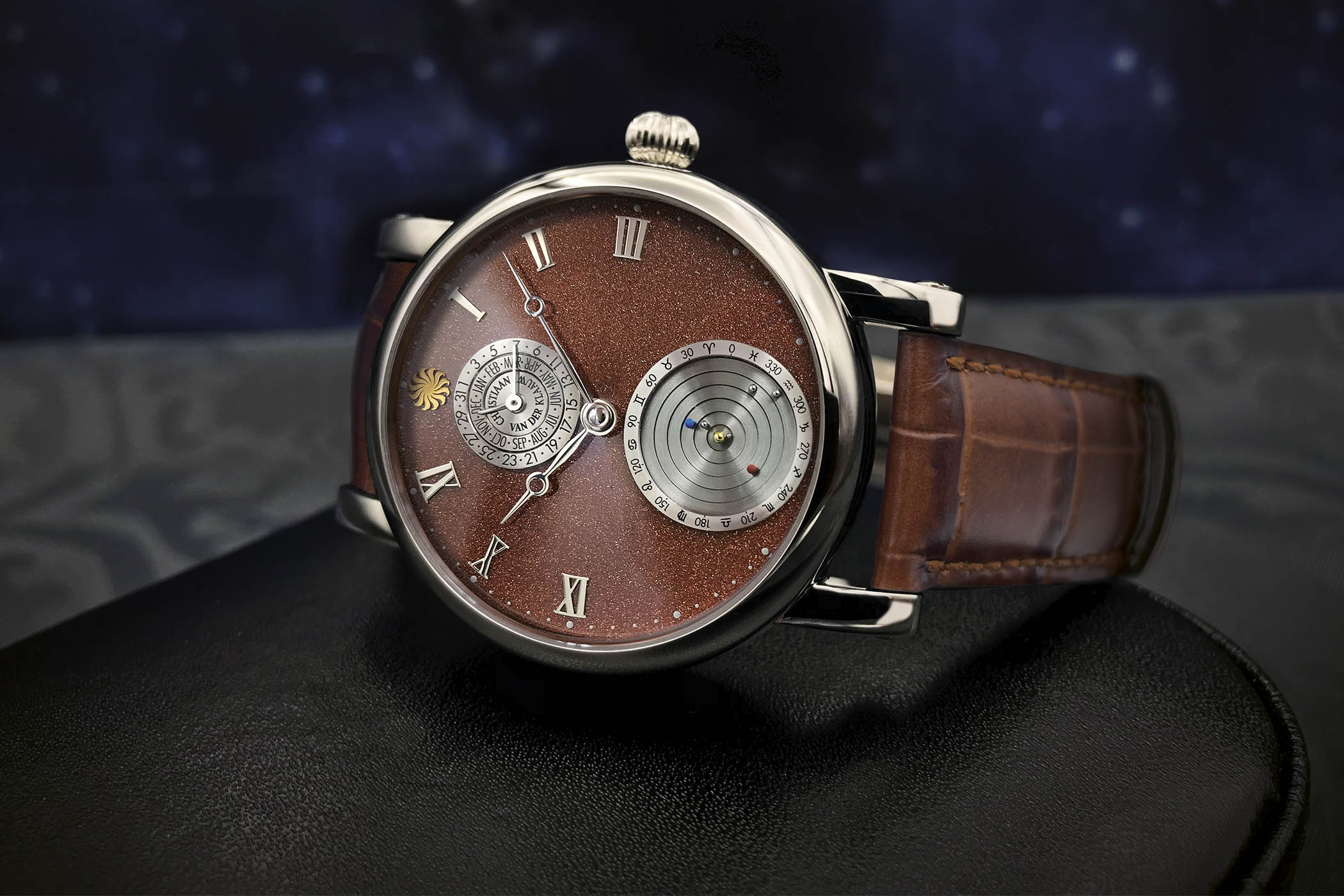
There is no surprise that nowadays, not only scientists, occultists, magicians and pagans display an exciting desire to follow planetary tracks. For one, Mercury in retrograde is a vital factor to consider by ordinary people. And unsurprisingly, astronomical indicators remain among our favourite watch complications and the Christiaan van der Klaauw Planetarium series we love. A new edition has just landed on our planet, depicting the sandy grounds of Mars, with the new CVDK Planetarium Dunes of Mars Limited Edition.
For most of its history, humankind attached great importance to the planet’s and stars’ motions and positions. The great scientists-artists of the Renaissance sought to comprehend the movement of celestial bodies to understand the forces driving life on Earth. The behavioural patterns displayed by animals, men and women included, and the lifecycles of the flora all seemed influenced by the cosmic bodies. In the XIV century, Giovanni de Dondi created the Astrarium, the first known clock-driven mechanism of the solar system. It featured indications of the movements of the planets, stars, and the Moon and a calendar for the year. The great astronomical clock of the Strasbourg Cathedral in Germany was built in 1354 and laid the foundation for future astronomical complications. Well before that, the hand-driven mechanism known as the Antikythera (discovered in 1901 in a wreck near the Greek island of Antikythera in the Mediterranean), dated between 150 and 100 BC, exhibited the daily motions of the Sun, Moon, and the five known (at that time) planets. It was geocentric and built as a “mechanical computer” to calculate astronomical positions.
The new Christiaan van der Klaauw Planetarium Dunes of Mars timepiece features a familiar orrery at 6 o’clock, a tiny mechanical model of the solar system. It illustrates the relative positions and motions of the six planets: Mercury, Venus, Earth, Mars, Jupiter and Saturn, according to the heliocentric model, with the relative sizes of their bodies, Sun, Earth and Mars, in colour. The background to enjoy this prolonged celestial show is a respectful nod to the Red Planet, Mars. The rusty red of Mars’ iron oxide surface is the colour of the specially crafted aventurine glass dial. The Dunes of Mars edition, like other watches in the Planetarium collection, is also equipped with date and month indications, found on a two-disc dial just below the 12-hour marked by a signature yellow twelve-claw sun logo. The planetarium rings, the applied Arabic numerals – “above the horizon” only – and the hands are rhodium-plated. Rhodium use fits quite nicely into this martian-themed watch. This noble metal from the platinum family is hard and inert against corrosion and most aggressive chemicals – it must be the perfect material for the Red Planet; what a match!
The aventurine dial red and the rhodium-plated silvery-white colours work very well with 40mm diameter round steel, white or rose gold cases chosen for this Planetarium Dunes of Mars edition. The harsh cold of steel creates a feeling of better fitting when looking at the images, but the watches must be seen in person. The caseback is transparent, and the movement inside is CVDK7386, with automatic winding powered by a twin barrel to let the watch run non-stop for a maximum of 96 hours. It is decorated up to the high standards of haute horlogerie, and the rotor with engraved planets, stars and “zonnenklauw”, the sun logo, is a beautiful object in itself.
The planetarium module on top of the 7386 is an in-house child of Christiaan van der Klaauw who presented his creation in 1999. Since then, it has remained the most miniature Planetarium ever and is a coveted complication. Van Cleef & Arpels, famous for their creativity and respect towards independent watchmakers, commissioned Christiaan van der Klaauw twice for the exclusive development of the planetarium module for VCA’s Poetic Complications. And last year’s CVDK Planetarium Eise Eisinga was awarded the “Calendar and Astronomy Watch Prize” by the GPHG.
Astronomical complications are surprising, sometimes even puzzling. Only some people can comprehend the equation of time, and we pay no attention to the sidereal time. With the CVDK Planetarium Dunes of Mars, you can follow the planetary moves and dream of conquering the Red Planet. And be the owner of one of the smallest planetariums in the world.
The Christiaan van der Klaauw Planetarium Dunes of Mars are offered on a brown leather strap with a folding clasp for the steel version and a pin buckle for gold models. The steel watches will retail for EUR 49,500, the price of the white gold edition is EUR 75,300, and for the red gold edition, it is EUR 70,000. All three come in limited series of six each. Please visit www.klaauw.com and enjoy the planetarium’s animation in normal, fast and super-fast modes.

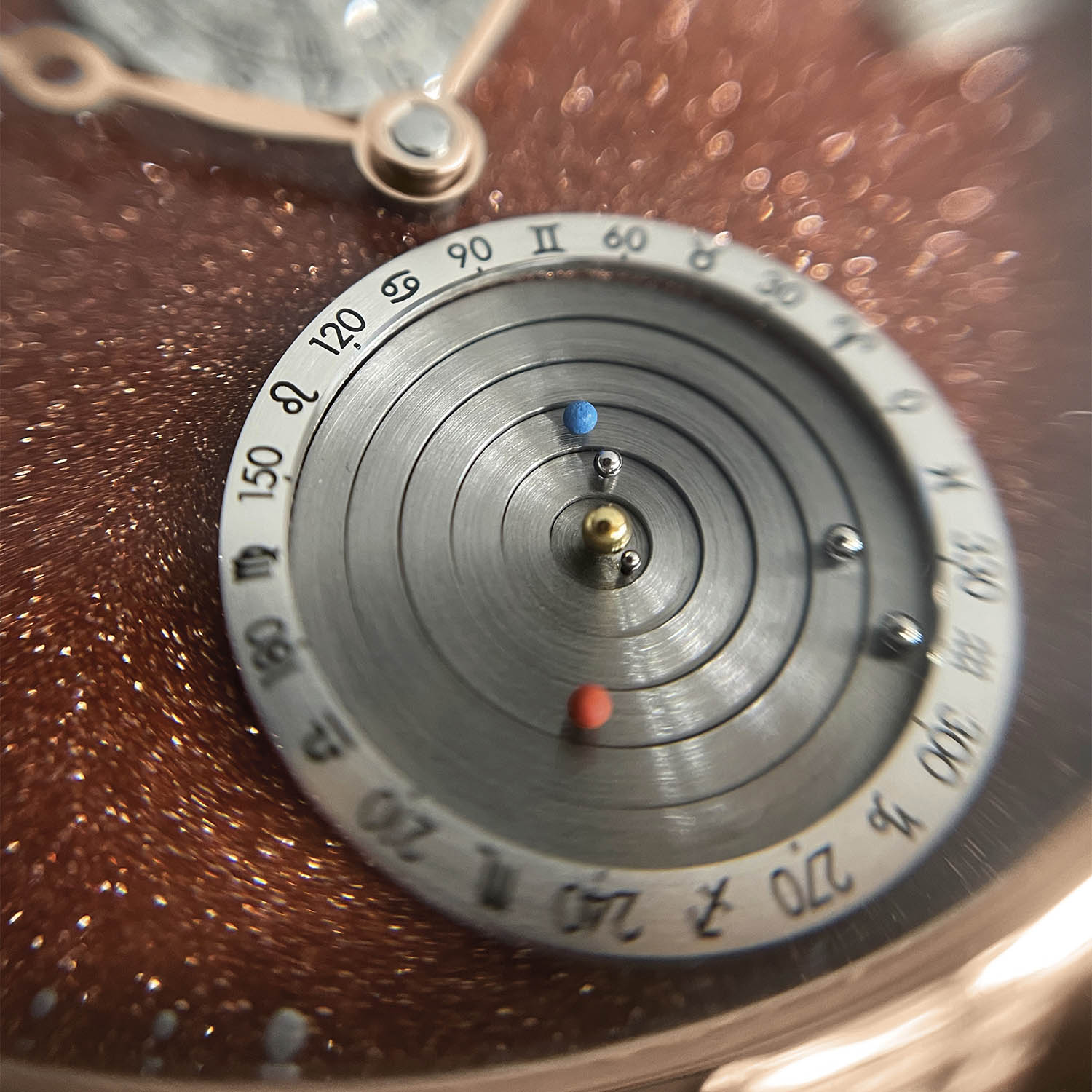
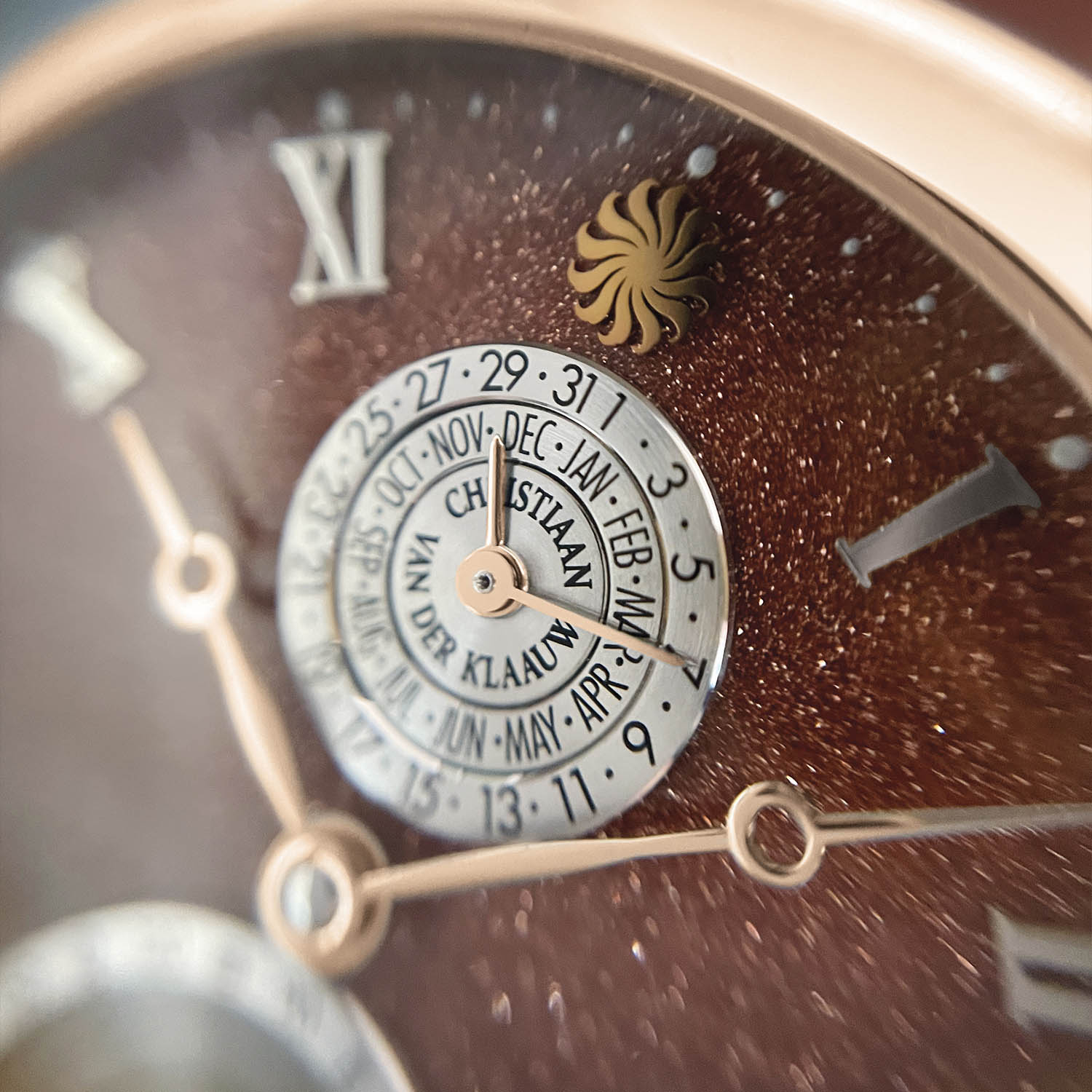
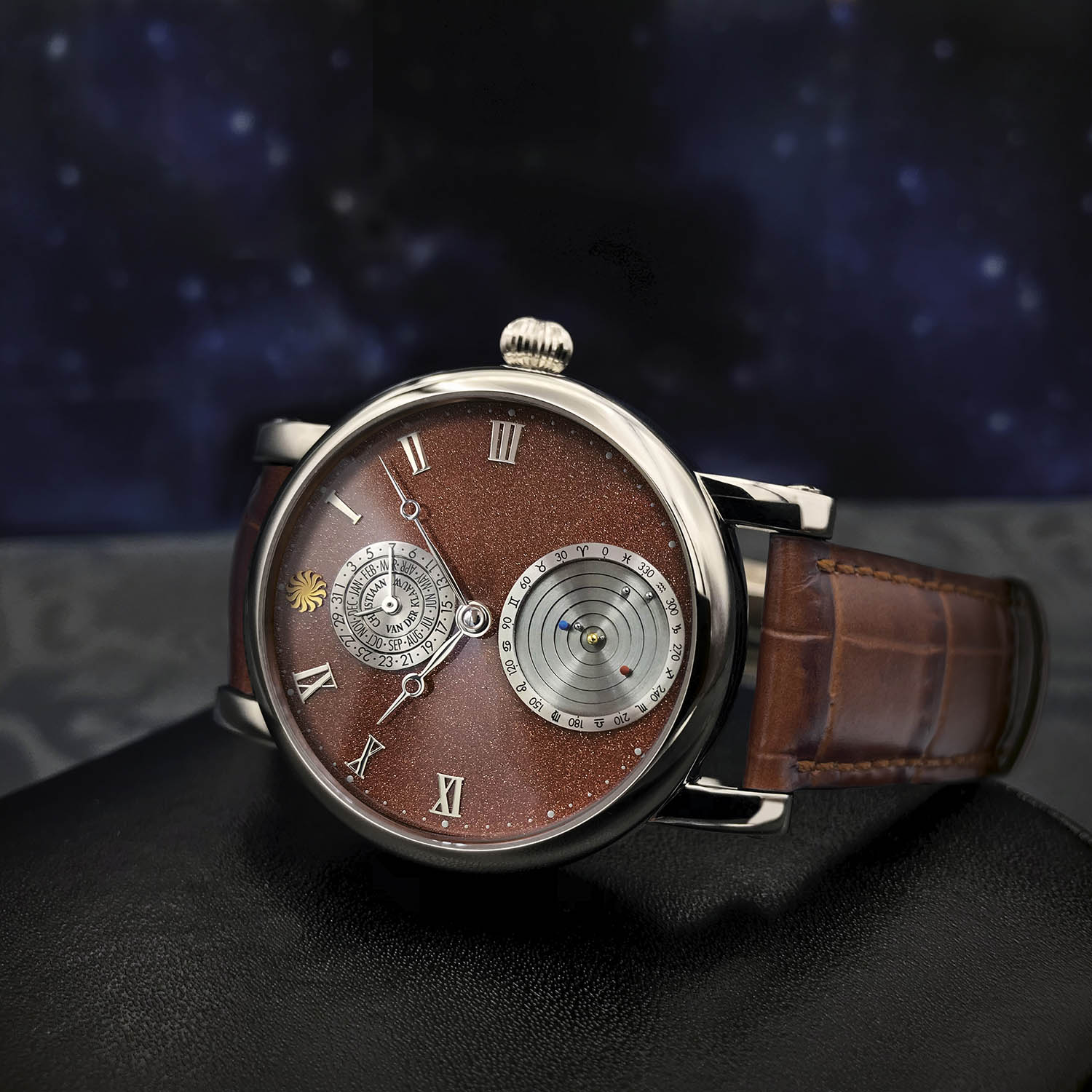
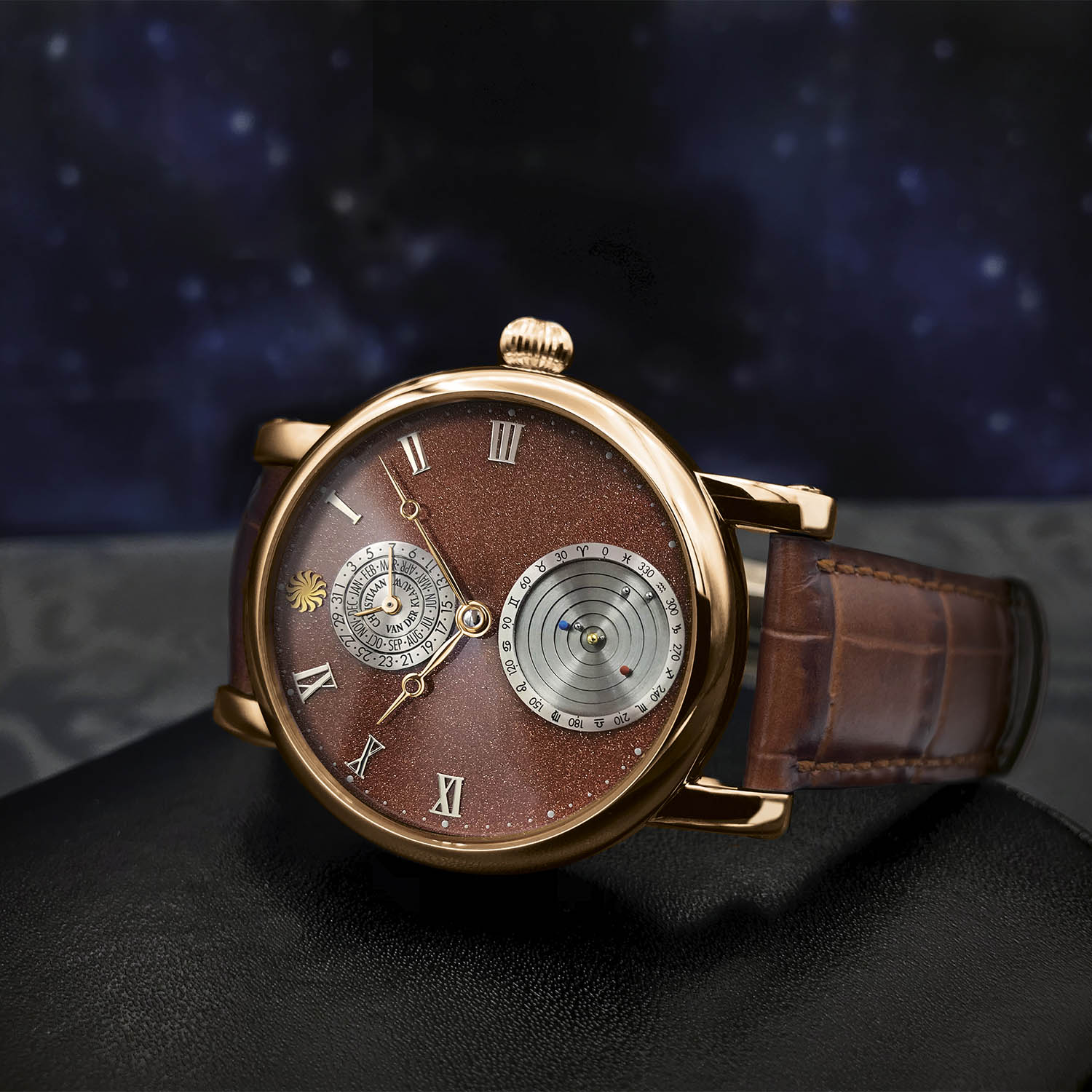
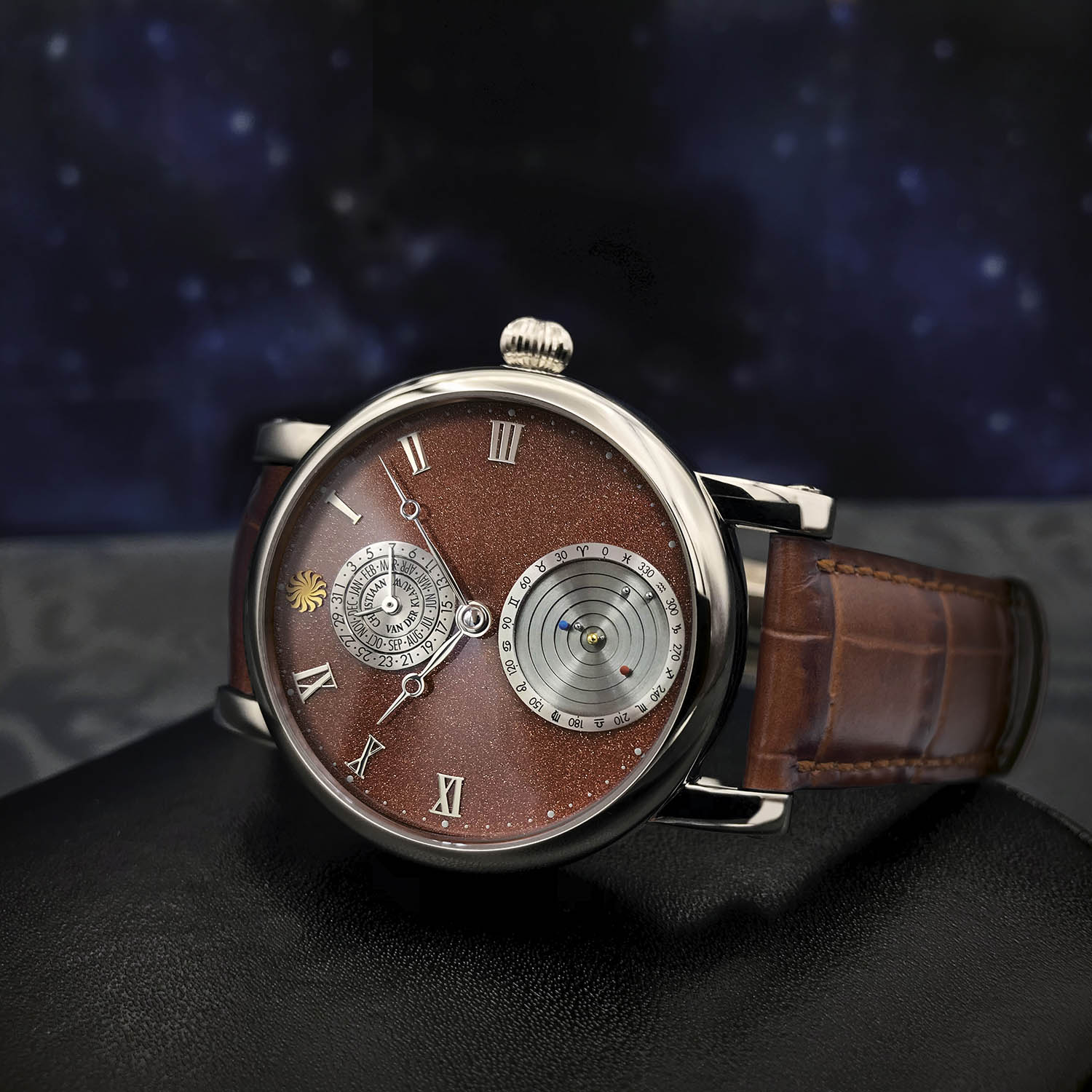
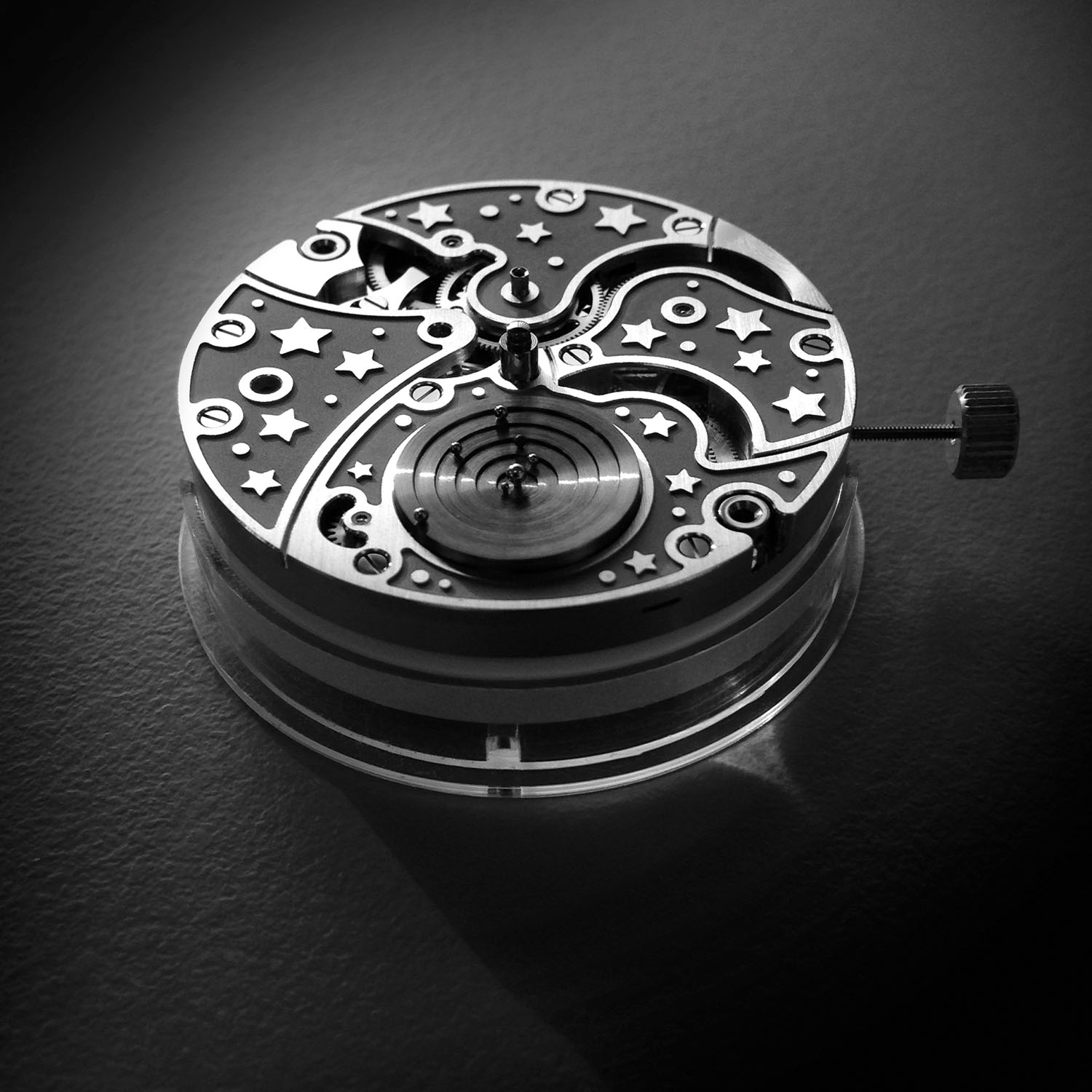
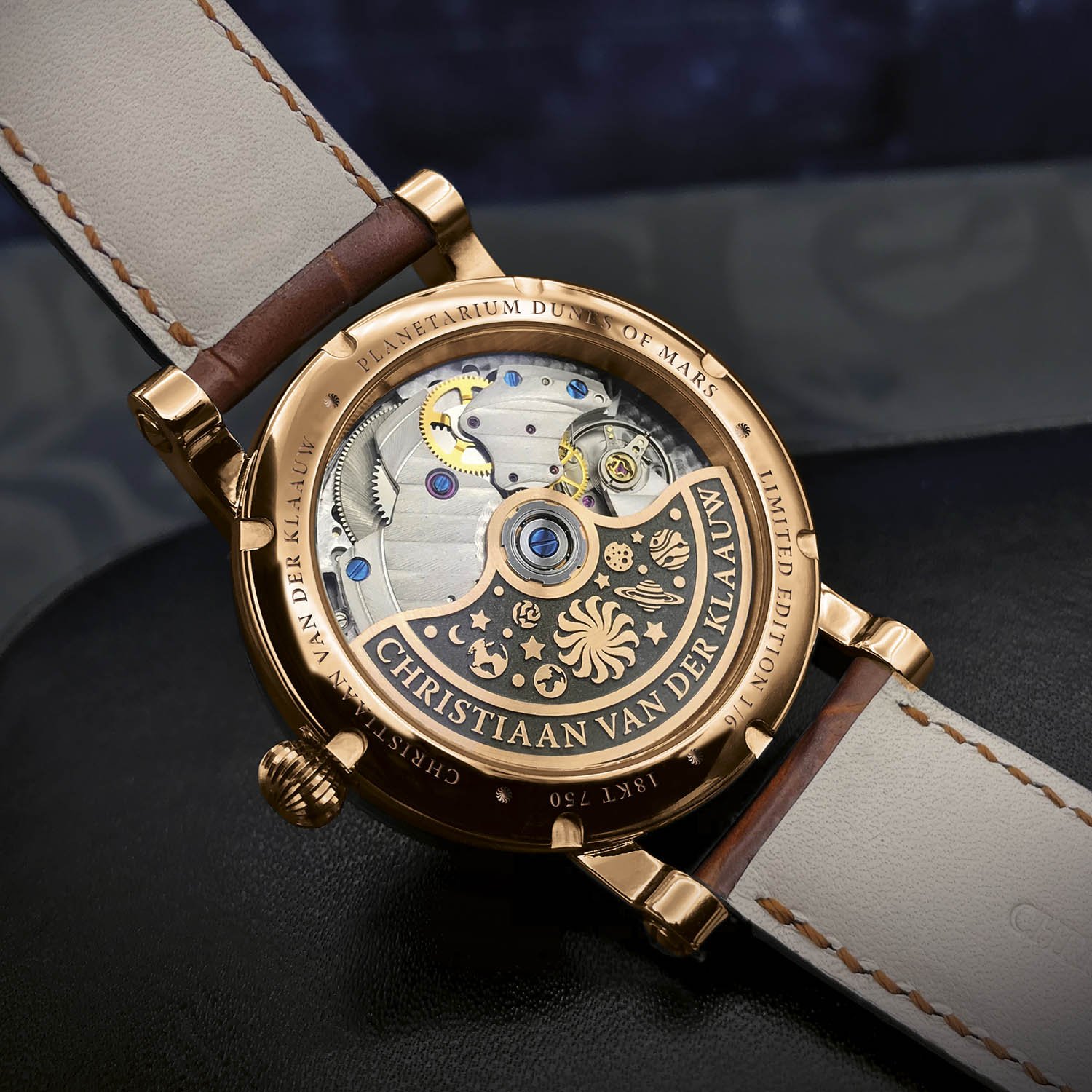
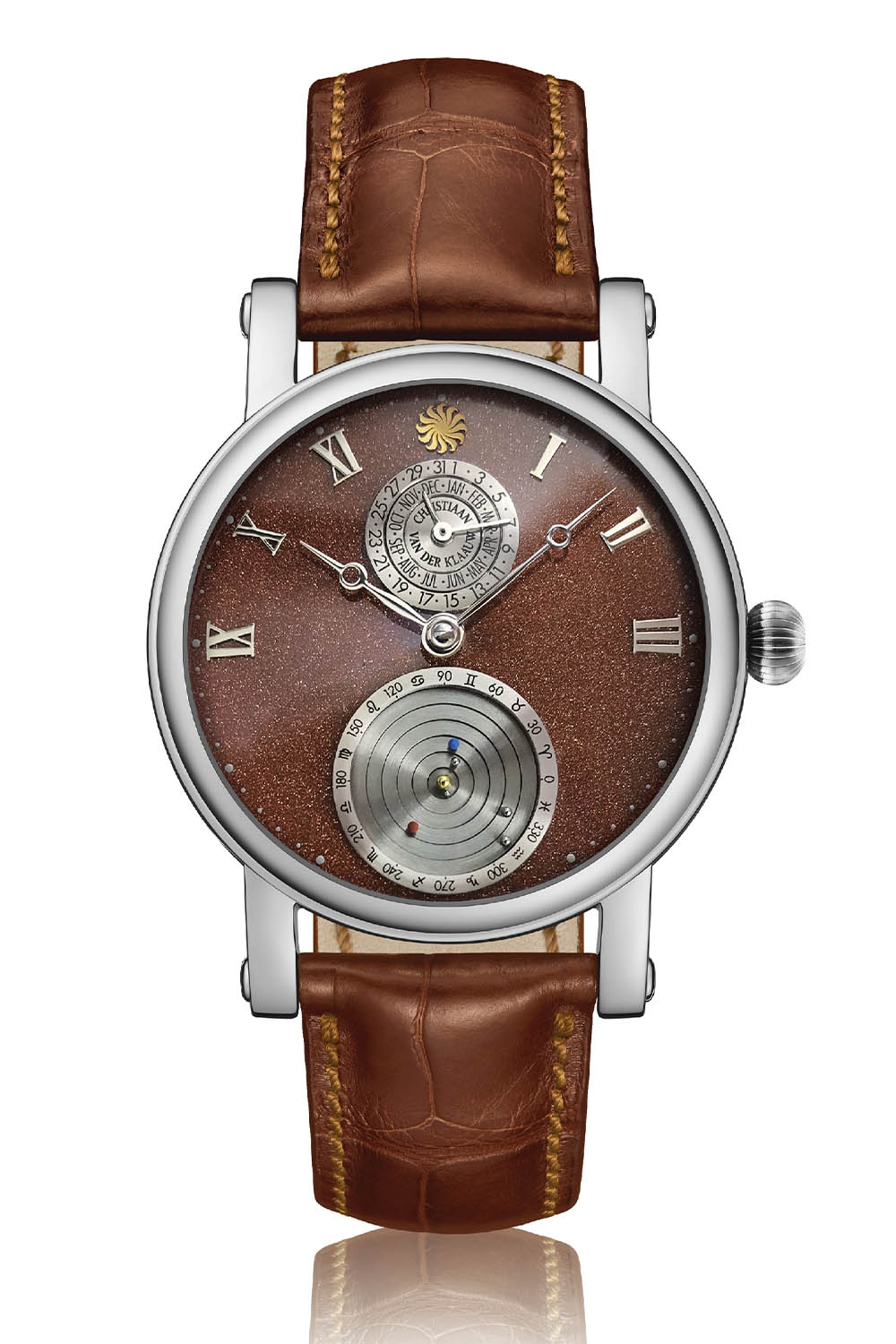
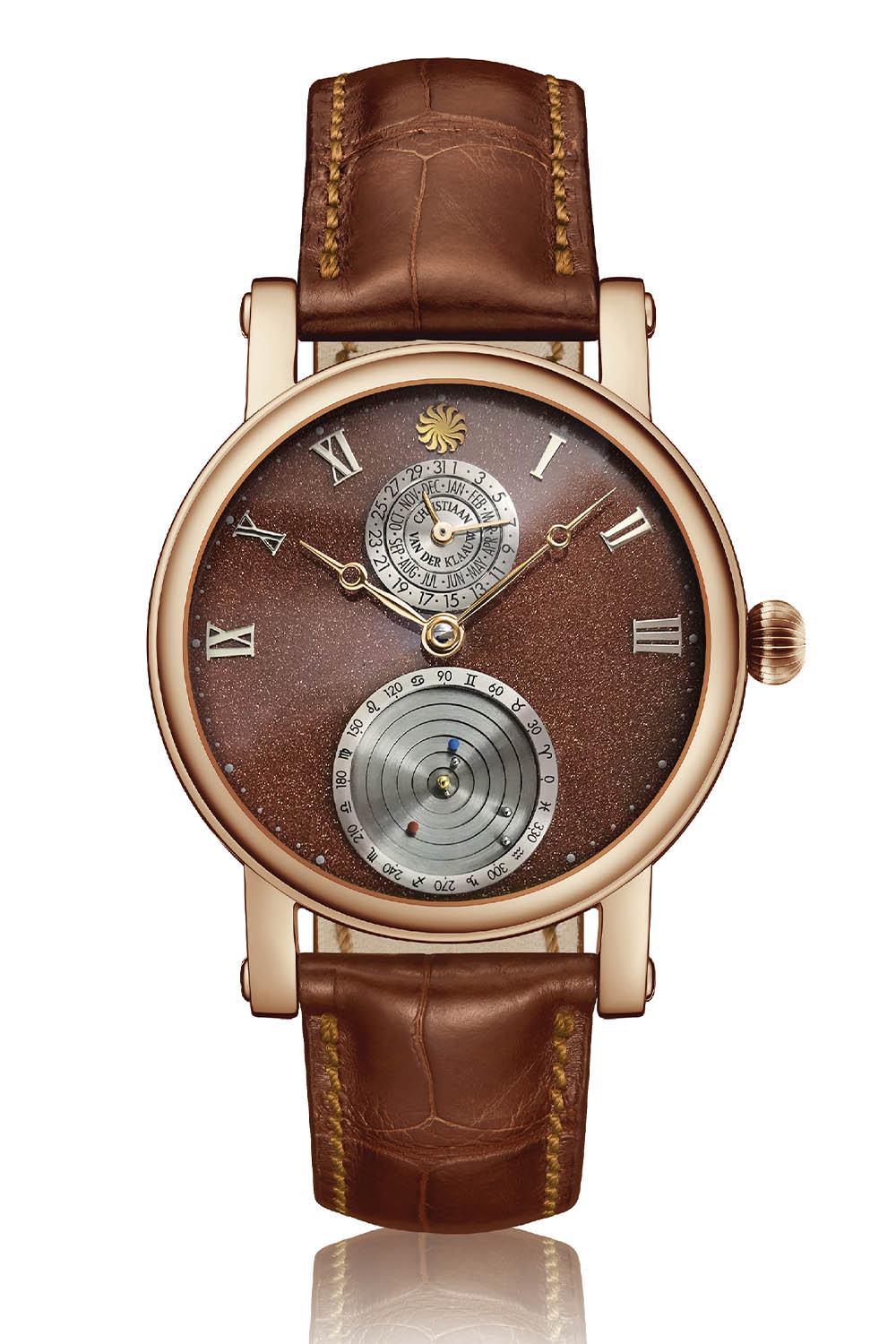
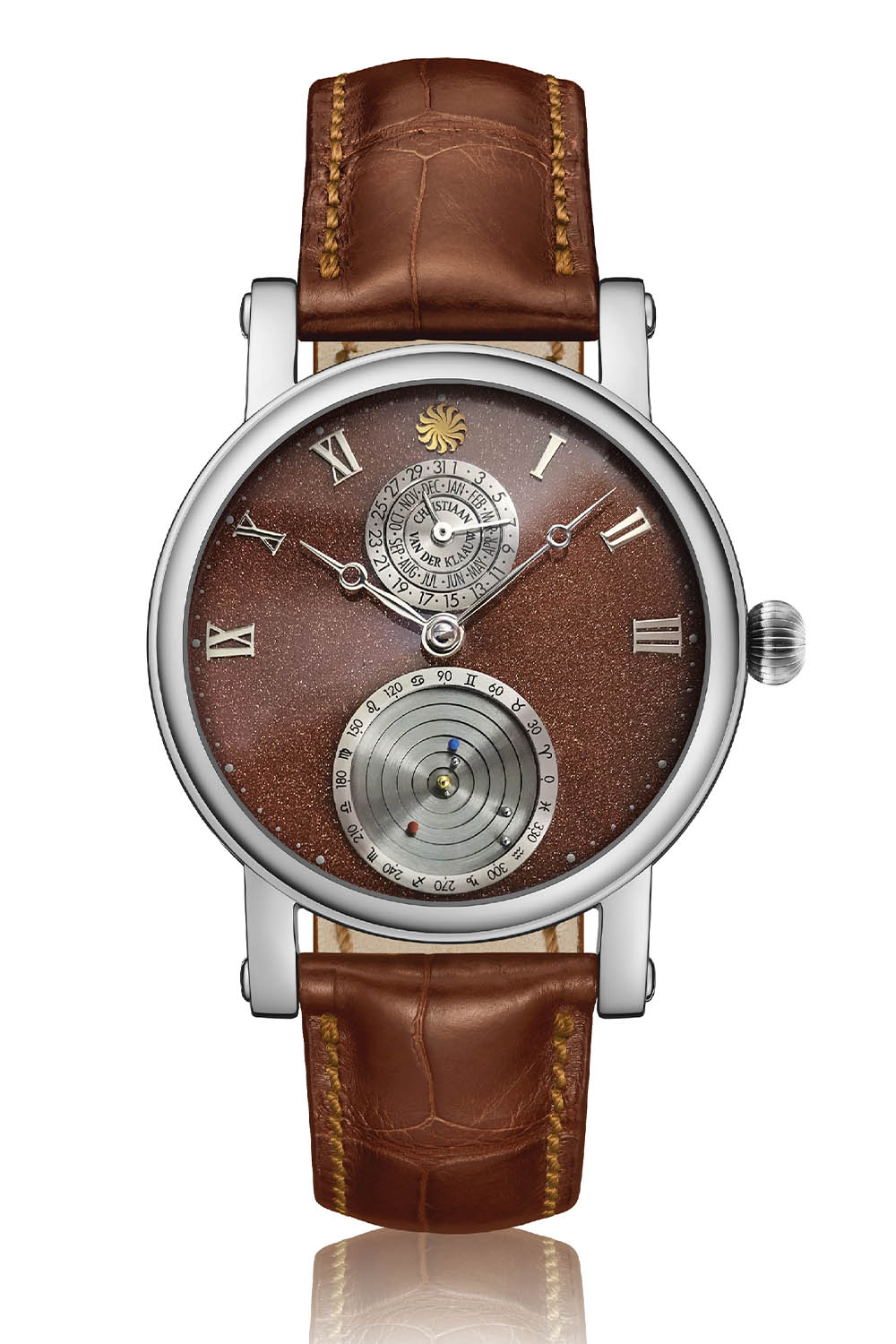



1 response
I really really really like the watches of Van der Klaauw. But why oh why do they always have computer generated pictures of their watches, instead of a picture of a real watch?